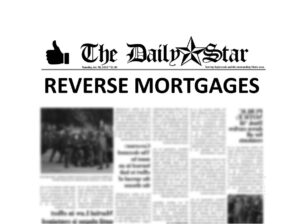Are you now offering Reverse Mortgages, sometimes known as HECMs (Home Equity Conversion Mortgages)? If not, you may be missing out on another home financing opportunity.
With rates remaining low, a reverse loan may be an option for many older homeowners. They can access some of the equity they built in their home without taking on the expense of a new or higher payment; in fact, with no monthly mortgage payment at all.
FHA’s recent updates to requirements for obtaining a HECM have resulted in a projected 50% decrease in defaults (Risks). That’s good for homeowners, lenders, and FHA.
The updates are intended to ensure the borrower has the capability to retain and maintain the home after getting the reverse mortgage. That’s a good thing.
 Unfortunately, Reverse Mortgages haven’t taken off among older homeowners. Maybe it’s because there is a fear of the unknown and a misunderstanding about how they work.
Unfortunately, Reverse Mortgages haven’t taken off among older homeowners. Maybe it’s because there is a fear of the unknown and a misunderstanding about how they work.
Lenders can help by educating homeowners, 62 or older, on the process and benefits of this type loan. In doing so, they also expand their product line while providing a consumer service. This would be another arrow in the quiver, for use by your originators. Another shot at increasing business.
Homeowner interest in a Reverse Mortgage may lead to other financing opportunities. Depending on the circumstances, the consumer may decide on alternative financing like a standard refi, a HELOC, or, depending on equity, decide to downsize. Servicing the customer while providing multiple financing options is a good thing for any lender.
To help, information about FHA’s HECM program, with frequently asked questions, may be found (HERE). It’s worth a little research. You may find that you have another avenue to increase your lending and your income. Refi’s won’t last forever (maybe).
More good news: Reverse Mortgages are exempt from TRID.
